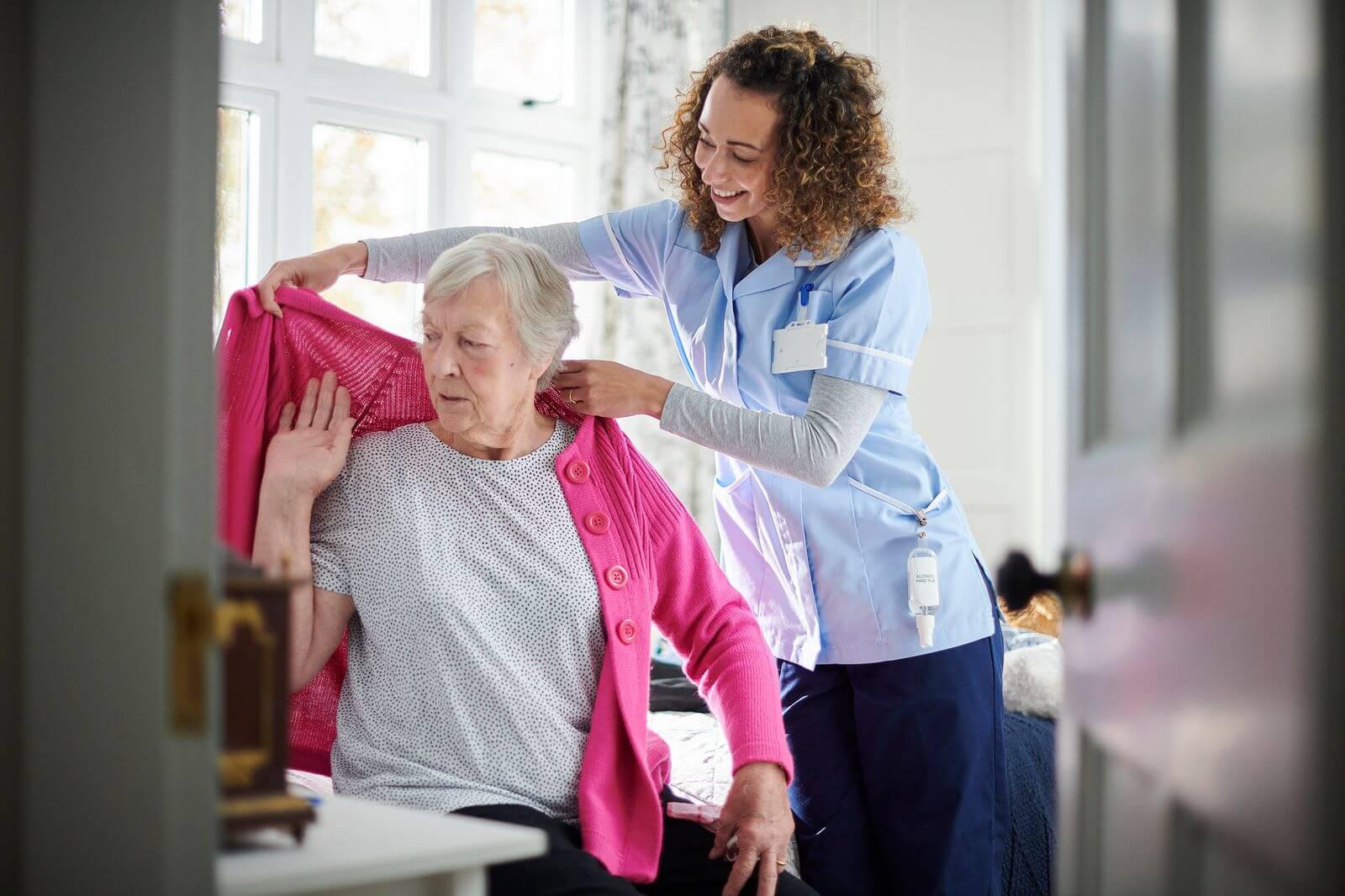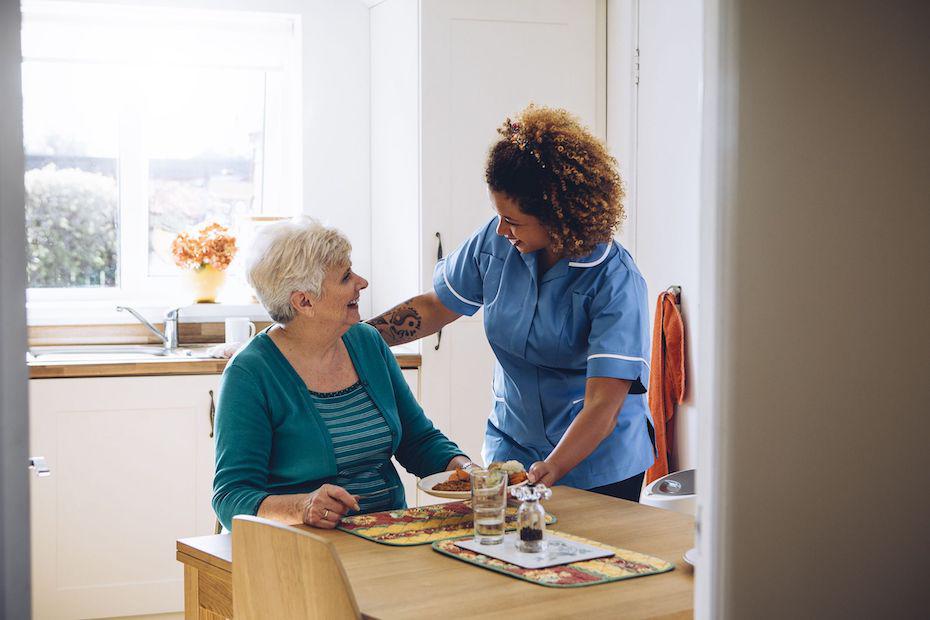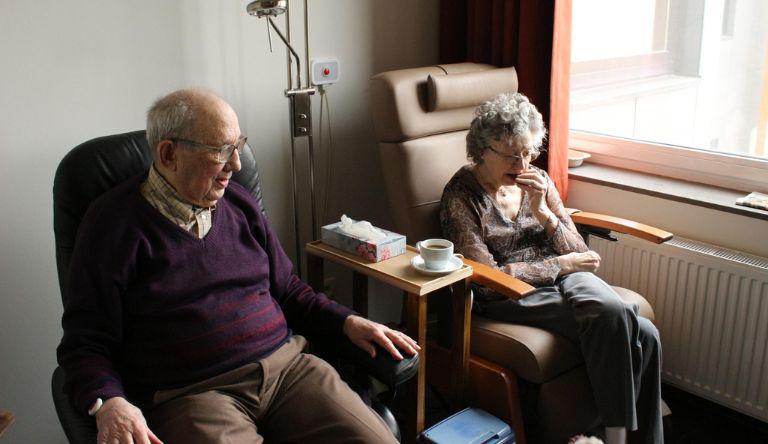Imagine a place where comfort, safety, and personalized attention come together to create a nurturing environment for those who need it most. That's what a personal care home offers.
Whether you're considering options for yourself or a loved one, understanding what a personal care home is can open doors to peace of mind and better living. You might be searching for a space that feels like home while providing the care and support necessary for daily life.
Dive into this article to discover how personal care homes blend independence with assistance, ensuring that every resident feels valued and respected. You'll learn why these homes are becoming the choice for many families seeking a balance between care and lifestyle. Get ready to explore a solution that may transform your perception of elder care and resonate with your needs.

What Is A Personal Care Home
Personal care homes offer a nurturing environment for individuals needing assistance with daily activities. These residences provide support for seniors and others who require help with personal care tasks. Understanding what a personal care home is can help families make informed decisions for their loved ones.
What Is A Personal Care Home?
A personal care home is a residential setting where individuals receive assistance with daily living tasks. These homes cater to those who might struggle with activities like dressing, bathing, or medication management. Unlike nursing homes, personal care homes focus on personal assistance rather than medical care.
Types Of Services Provided
Assistance with daily activities: Help with grooming, dressing, and bathing.
Medication management: Ensures proper dosage and timing.
Nutritious meals: Healthy meal preparation and dietary support.
Social activities: Encourages interaction and engagement.
Personal care homes offer a safe and supportive environment. Residents enjoy personalized care tailored to their needs. This setting promotes independence while providing necessary support. Families can feel assured knowing their loved ones are cared for.
Who Can Benefit From A Personal Care Home?
Personal care homes are ideal for individuals who need help with daily tasks but do not require intensive medical care. They serve seniors, adults with disabilities, and others needing assistance. This option suits those who value privacy and a home-like atmosphere.
How To Choose A Personal Care Home
Choosing a personal care home involves considering location, services, and cost. Visiting homes, meeting staff, and reviewing resident feedback helps in decision-making. Families should ensure the home aligns with the individual's needs and preferences.

Types Of Personal Care Homes
Personal care homes are residential settings where individuals receive assistance with daily living activities. These homes provide a supportive environment for those who may not need full-time medical care but require help with personal care tasks. Understanding the different types of personal care homes can help families choose the best option for their loved ones.
Independent Living Communities
Independent living communities cater to seniors who can manage most daily activities independently. They offer a community setting where residents can enjoy social activities and amenities. These communities often provide meal services, housekeeping, and transportation. Residents enjoy freedom while having access to assistance if needed.
Assisted Living Facilities
Assisted living facilities provide more support than independent living communities. Residents receive help with personal care tasks such as bathing, dressing, and medication management. These facilities offer a blend of independence and assistance. They provide private or semi-private apartments with community dining and recreational activities.
Residential Care Homes
Residential care homes, also known as group homes, offer a more intimate, home-like setting. They serve a smaller number of residents compared to larger facilities. Staff provide personalized care and attention. These homes are ideal for individuals who prefer a cozy environment and require help with daily activities.
Continuing Care Retirement Communities (ccrcs)
CCRCs offer a range of care levels within a single community. Residents can move from independent living to assisted living or skilled nursing as their needs change. This type of community provides a continuum of care, allowing residents to age in place without relocating. CCRCs often include amenities such as fitness centers, pools, and social clubs.
Memory Care Units
Memory care units specialize in caring for individuals with Alzheimer's or dementia. These units are designed to provide a secure environment with 24/7 supervision. Staff are trained to handle the unique challenges associated with memory loss. Activities focus on cognitive stimulation and maintaining a high quality of life.
Skilled Nursing Facilities
Skilled nursing facilities offer the highest level of care outside of a hospital setting. They provide round-the-clock medical supervision and support for individuals with serious health conditions. These facilities are equipped to handle rehabilitation, long-term care, and specialized medical needs.
Understanding these types of personal care homes can guide families in making informed decisions for their loved ones. Each type offers different levels of care and support, catering to varied needs and preferences.
Services Offered
Personal care homes provide a nurturing environment for individuals who need help with daily living. These homes offer a variety of services tailored to meet the unique needs of each resident. From daily assistance to health support and social activities, personal care homes ensure a balanced and supportive lifestyle for their residents.
Assistance With Daily Activities
Personal care homes offer assistance with daily activities, ensuring residents lead a comfortable life. Daily tasks can become challenging as people age or face health issues. These homes provide support in various areas:
Bathing: Trained staff help residents maintain personal hygiene.
Dressing: Assistance in selecting and wearing appropriate clothing.
Feeding: Help with meal preparation and eating.
Mobility: Aid in moving around safely.
Residents receive personalized care based on their individual needs. This support promotes independence while ensuring safety. A structured routine with personalized care plans ensures that each resident receives the right level of assistance.
Health And Wellness Support
Health and wellness are crucial in personal care homes. They focus on maintaining and improving the health of their residents through:
Medication Management: Ensuring timely and accurate medication intake.
Regular Health Check-ups: Routine monitoring by healthcare professionals.
Physical Therapy: Exercises and therapies to improve mobility.
Nutrition: Balanced meals tailored to dietary needs.
Residents benefit from a holistic approach to health. Professional staff work closely with healthcare providers to deliver comprehensive care. This support helps in managing chronic conditions and promoting overall well-being.
Social And Recreational Activities
Social interaction plays a vital role in personal care homes. They offer a wide range of activities to keep residents engaged and active:
Group Activities: Games, crafts, and discussions to foster social bonds.
Outings: Trips to local attractions and events.
Entertainment: Movie nights, music sessions, and performances.
Exercise Classes: Yoga, dance, and fitness sessions for all levels.
These activities are designed to promote mental and emotional health. Residents enjoy a vibrant community life, with opportunities to learn new skills and form friendships. A diverse calendar of events ensures there is something for everyone.
Choosing A Personal Care Home
Choosing the right personal care home is a significant decision. It involves finding a place that meets the needs of your loved ones while providing a comfortable and safe environment. Understanding what a personal care home offers helps in making an informed choice. These homes provide support with daily activities like bathing, dressing, and medication management. They are ideal for those who need more care than can be provided at home but do not require the intensive medical care of a nursing home.
Factors To Consider
When selecting a personal care home, several factors demand attention. Each aspect plays a vital role in ensuring the well-being and happiness of your loved ones.
Location: Proximity to family and friends can enhance the resident's quality of life. It makes visits easier and more frequent.
Cost: Understand the fee structure. Compare it with your budget and financial resources. Some facilities offer financial aid or accept insurance.
Services and Amenities: Check the services offered, such as meals, housekeeping, and recreational activities. These contribute to a fulfilling lifestyle.
Staff Credentials: Qualified staff ensures professional care. Verify their training and experience in elder care.
A table might help compare different personal care homes:
Facility | Location | Cost | Services | Staff |
Home A | City Center | $$$ | Meals, Housekeeping | Certified Nurses |
Home B | Suburbs | $$ | Recreation, Transportation | Experienced Staff |
Touring Facilities
Touring the facilities provides firsthand insight into the environment and care quality. It’s crucial to observe daily life in the home.
During your tour, pay attention to:
Cleanliness: A clean facility reflects good management and care.
Resident Interaction: Notice how residents interact with staff and each other. Friendly interactions suggest a positive atmosphere.
Safety Measures: Check for safety features like handrails and emergency call systems. These are essential for resident security.
Activities: Inquire about recreational programs. They keep residents engaged and active.
Ask questions during the tour. Clarify any doubts about care routines, visiting hours, and emergency protocols. This information is invaluable in making your decision.
Cost Of Personal Care Homes
Personal care homes provide a supportive environment for individuals who need assistance with daily activities. These facilities offer personalized care tailored to the needs of each resident. Understanding the cost of personal care homes is essential for families planning long-term care. Costs can vary based on location, services offered, and the level of care required. Evaluating these factors helps in making informed decisions.
Payment Options
The cost of personal care homes can be managed through various payment options. Families often explore multiple avenues to ensure they choose the most suitable arrangement. Here are some common payment methods:
Private Pay: Many families choose to pay out-of-pocket. This method involves using personal savings or income to cover expenses.
Long-term Care Insurance: Some individuals have insurance that covers a portion of the costs.
Veterans Benefits: Veterans or their spouses may qualify for assistance through specific programs.
To understand the financial commitment, consider the following table illustrating average costs based on room type:
Room Type | Average Monthly Cost |
Private Room | $3,500 - $5,000 |
Shared Room | $2,000 - $3,500 |
Assessing these options helps families plan for the necessary expenses effectively. Comparing different facilities and understanding their pricing structure also aids in making cost-effective choices.
Insurance And Assistance Programs
Insurance and assistance programs can significantly reduce the financial burden of personal care homes. Several programs offer support to eligible individuals:
Medicaid: Medicaid may cover personal care home costs for eligible low-income individuals. Each state has different rules and benefits.
Medicare: Although Medicare does not typically cover personal care homes, it may assist with short-term care in specific situations.
Supplemental Security Income (SSI): SSI provides financial help to seniors and disabled individuals with limited income.
Understanding these programs requires careful research and consultation. Families should contact relevant agencies to explore eligibility and benefits. Assistance from social workers or elder care advisors can also be beneficial in navigating these options. Being informed about available programs can lead to substantial savings.
Regulations And Standards
Personal care homes provide vital assistance to those who need help with daily activities. These homes offer a safe and supportive environment. Understanding the regulations and standards governing these facilities is crucial. These rules ensure safety, quality care, and respect for residents.
Regulations Overview
Regulations for personal care homes vary by location. Each state or region has its own laws. These laws set the framework for operation. They cover staffing requirements, health and safety measures, and resident rights. Compliance is mandatory. Personal care homes must adhere strictly to these regulations.
Staffing Standards
Proper staffing is essential in personal care homes. Regulations specify the number of caregivers needed per resident. Caregivers must be trained and qualified. They should have knowledge of care practices and emergency procedures. Regular training updates are often required. This ensures caregivers can provide high-quality assistance.
Health And Safety Protocols
Health and safety are top priorities. Personal care homes must maintain clean and safe environments. Regulations mandate regular health inspections. Safety protocols include fire safety measures, secure entry systems, and emergency preparedness plans. These standards protect residents and staff.
Standard | Requirement |
Staffing Ratio | 1 caregiver per 5 residents |
Training | Annual updates required |
Health Inspections | Quarterly assessments |
Safety Protocols | Fire drills every month |
Resident Rights
Residents have specific rights. Regulations ensure dignity and respect. Personal care homes must honor these rights. Residents can make choices about their daily routines. They have the right to privacy and confidentiality. Complaints and concerns should be addressed promptly.
Right to privacy
Choice in daily activities
Access to personal belongings
Prompt response to complaints
Monitoring And Compliance
Monitoring ensures compliance with regulations. Authorities conduct inspections and audits. Violations can lead to penalties or closure. Personal care homes must keep accurate records. They need to show proof of compliance during inspections.
Regular audits
Penalty for non-compliance
Record-keeping requirements
Understanding these regulations and standards is key. They ensure personal care homes provide safe, quality care to all residents.
Benefits Of Personal Care Homes
Personal care homes offer a supportive environment for individuals who need assistance with daily activities. These homes provide a range of services to ensure residents live comfortably and safely. Among the many advantages, the benefits of personal care homes stand out, making them an appealing choice for families. Residents enjoy tailored care, fostering independence while ensuring safety. With a focus on community and individual well-being, personal care homes create a nurturing atmosphere for everyone.
Community And Socialization
Living in a personal care home means being part of a vibrant community. Residents have daily opportunities to engage in social activities. This interaction promotes mental well-being and reduces feelings of loneliness.
Group activities: Residents can join in art classes, movie nights, and game sessions.
Shared meals: Eating together fosters a sense of belonging and companionship.
Common areas: Spaces designed for relaxation and socializing encourage friendship.
Studies show that socialization improves mood and cognitive function. Personal care homes provide structured environments where residents feel connected and valued. The sense of community helps people stay positive and engaged.
Safety And Security
Safety is a top priority in personal care homes. These facilities are equipped with safety measures to protect residents. Staff members are trained to handle emergencies effectively.
Feature | Benefit |
24/7 supervision | Ensures immediate help is available. |
Secure entrances | Prevents unauthorized access. |
Medication management | Reduces risk of errors. |
Families find peace of mind knowing their loved ones are in a safe environment. Personal care homes are designed to reduce risks and enhance security. Residents can focus on enjoying their daily lives without worry.
Challenges Faced
Personal care homes offer essential services to individuals who need assistance with daily activities. They provide a homely environment, ensuring residents feel comfortable and cared for. Despite their noble mission, these homes face numerous challenges that can impact their operations and the quality of care. Understanding these challenges is crucial for anyone involved in the healthcare sector.
Staffing Issues
One of the significant challenges personal care homes face is staffing. Ensuring there are enough qualified staff members is critical for providing adequate care. Many homes struggle with recruiting and retaining skilled workers. This issue often stems from several factors:
Low Wages: Many staff members are paid low wages, which can lead to dissatisfaction and high turnover rates.
High Workload: Staff often handle multiple responsibilities, leading to burnout and decreased job satisfaction.
Limited Training: Insufficient training can result in unprepared staff unable to meet residents' needs.
These issues can affect the quality of life for residents. To illustrate:
Issue | Impact |
Low Wages | High turnover rates |
High Workload | Staff burnout |
Limited Training | Unprepared staff |
Addressing these staffing issues is crucial for personal care homes to function effectively and provide quality care.
Quality Of Care Concerns
The quality of care in personal care homes is a critical concern. Residents rely on these homes for daily support and medical attention. Several factors can impact care quality, making it a complex issue:
Inadequate Staffing: With fewer staff members, the quality of individual attention may decrease.
Lack of Resources: Insufficient resources can lead to unmet needs and poor living conditions.
Training Deficiencies: Without proper training, staff may struggle to provide effective care.
These concerns can significantly impact residents:
Factor | Impact |
Inadequate Staffing | Reduced individual attention |
Lack of Resources | Unmet needs |
Training Deficiencies | Struggles in care delivery |
Improving the quality of care requires addressing these concerns, ensuring residents live with dignity and respect.
Transitioning To A Personal Care Home
Transitioning to a Personal Care Home can be a significant change. Understanding this process helps ease the journey. A Personal Care Home provides a safe, supportive environment for individuals who need help with daily activities. It's designed to offer both independence and assistance, ensuring residents live comfortably and securely.
Understanding The Move
Moving to a Personal Care Home involves several steps. The first is recognizing the need for additional support. This decision often arises when daily tasks become challenging. Safety and health care are key factors in choosing this option.
Preparing For The Transition
Preparation makes the transition smoother. Start with a visit to potential homes. Meet the staff and explore the facilities. This helps residents feel more comfortable with their new environment.
Discuss personal needs with the care team.
Plan for personal belongings and space.
Understand the daily routine and activities offered.
The Emotional Aspect
Emotions play a big role in transitioning. It's normal to feel nervous or uncertain. Support from family and friends can help ease these feelings. Encourage open communication about concerns and expectations.
Financial Considerations
Financial planning is crucial. Personal Care Homes vary in cost based on services offered. Create a budget and explore payment options. Some may accept insurance or offer financial aid.
Service | Cost Estimate |
Basic Care | $2,500 - $3,500/month |
Enhanced Services | $3,500 - $5,000/month |
Adjusting To The New Environment
Adjustment takes time. Engage in activities to meet new people. Familiarize yourself with the surroundings. This helps create a sense of belonging and community.
Participation in events and social gatherings can foster friendships and make the transition enjoyable.

Personal Care Home Vs. Nursing Home
Choosing the right care facility for a loved one can be challenging. Understanding the differences between a Personal Care Home and a Nursing Home is crucial. Both provide essential services but cater to different needs. Knowing their distinctions helps in making informed decisions.
Personal Care Home
Personal Care Homes offer a comfortable setting for individuals who require assistance with daily activities. These activities include bathing, dressing, and medication management. Residents can enjoy a homely atmosphere with personalized care.
Assistance with daily activities
Medication management
Homely environment
Nursing Home
Nursing Homes are more suitable for individuals needing medical supervision. They provide skilled nursing care and therapies. Residents often have more complex medical needs.
Skilled nursing care
Therapies and rehabilitation
Medical supervision
Key Differences
Aspect | Personal Care Home | Nursing Home |
Environment | Homely | Clinical |
Care Level | Assistance | Medical |
Cost | Generally lower | Generally higher |
Choosing The Right Option
Understand the needs of the individual. Consider their health and daily requirements. Evaluate the facilities and services offered. This ensures the best care for your loved one.
Benefits Of Each
Personal Care Home: Offers independence with support.
Nursing Home: Provides comprehensive medical care.
Making an informed choice benefits both the individual and family. Prioritize comfort and care.
Future Of Personal Care Homes
Personal care homes provide a supportive environment for those who need assistance with daily living. These homes cater to individuals who cannot live independently but do not require intensive medical care. The landscape of personal care homes is evolving. It's adapting to meet the needs of a growing and diverse population.
The future of personal care homes is promising. Innovations and trends are reshaping how these facilities operate. They aim to offer more personalized and efficient care.
Technology Integration
Technology is becoming a cornerstone in personal care homes. Smart devices and apps help monitor residents' health. They also improve communication between staff and family members. This technology ensures better safety and enhances the quality of care.
Focus On Wellness
Future personal care homes will emphasize wellness programs. Activities and nutrition plans will be personalized. This approach helps improve residents' overall well-being and mental health.
Eco-friendly Designs
Many homes are adopting eco-friendly designs. These include energy-efficient systems and sustainable materials. Such practices not only reduce costs but also create a healthier living environment.
Community Engagement
Strong community ties will play a vital role. Personal care homes will foster connections with local communities. This engagement helps residents feel part of a larger network, boosting their social lives.
Flexible Care Models
Care models will become more flexible. Homes will offer various levels of care to accommodate changing needs. This adaptability ensures residents receive appropriate support at every stage.
Personalization And Choice
Personalization will be key in the future. Residents will have more choices in their daily routines. This empowers them and enhances their quality of life.
As the demand for personal care homes increases, the focus will be on delivering compassionate and customized care. Facilities will evolve to meet these expectations, ensuring a brighter future for all residents.
Frequently Asked Questions
What Is The Meaning Of Personal Care Home?
A personal care home provides residential care and assistance for individuals who need support with daily living activities. It offers a safe environment, meals, and personal services like bathing and medication management. Residents receive personalized care based on their needs, promoting independence and enhancing quality of life.
What Is The Difference Between Assisted Living And Personal Care Homes?
Assisted living offers more comprehensive care, including medical support and help with daily activities. Personal care homes provide basic assistance, mainly focusing on personal needs like grooming and meal preparation. Both aim to enhance quality of life, but assisted living facilities cater to individuals requiring higher levels of care.
What Is An Example Of Personal Care?
An example of personal care is using moisturizer to keep skin hydrated and healthy. Personal care includes daily hygiene, grooming, and self-care routines. Regular personal care enhances physical appearance, boosts confidence, and promotes overall well-being.
Conclusion
Personal care homes offer essential support for those needing daily assistance. They provide a safe, comfortable environment for residents. Staff members ensure personalized care, meeting individual needs. These homes foster a sense of community and belonging. Residents enjoy social activities and companionship.
Families gain peace of mind, knowing loved ones are well-cared for. Choosing the right home is important. Research options carefully to find the best fit. Personal care homes can greatly enhance quality of life. With thoughtful selection, they offer a nurturing space for individuals to thrive.